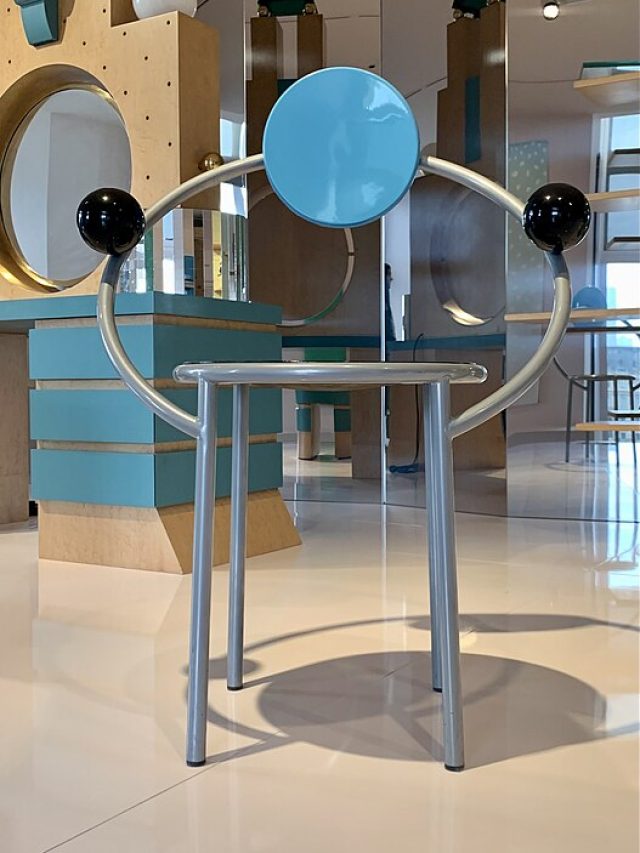American architect Michael Graves was well-known for his postmodern designs and contributions to architecture and design. He taught architecture at Princeton University as well. In his work, Graves frequently combined traditional forms with modern concepts. He is best recognised for his work on the Portland Building in Portland, Oregon, and the Team Disney building in Burbank, California. His architectural style frequently used geometric forms, vivid hues, and a humanistic approach to design. Graves left a profound architectural and creative legacy when he passed away in 2015.
As a response to the austere modernist style that dominated the mid-20th century, Graves was a crucial figure in the postmodern architecture movement. He promoted a more humanistic approach to architecture, utilising colour, decoration, and historical allusions to produce aesthetically pleasing and easily navigable structures. The Portland Building in Oregon and the Humana Building in Louisville are famous buildings that are examples of Graves’ creative use of forms, colours, and historical references. Beyond architecture, Graves made a substantial contribution to product design. Working with firms like Alessi, he designed functional yet whimsically beautiful home goods.
Biography of a Master
‘The consequences of this decision for Michael’s way of seeing are difficult to tease out, if only because vision is among the more subjective topics in medicine: one can only see the way one sees, and Michael never had anything with which to contrast his own experience. But some aspects of life with exotropia can be described with certainty, write Ian Volner in his biography on Michael Graves.
According to Ian Volner, Michael was always aware, at least in the abstract, that his eye played some role in his creative process. “I’m the only artist and architect I know,” he would joke, “who sees the world from a skewed perspective.” Not the only one. But the only one he knew. The consciousness of his condition as a boundary of difference—of both seeing and being seen differently from those around him—was another element of the condition for Michael, and this, too, may be symptomatic of strabismus. Almost as significant as its perceptive implications are its psychosocial effects. The awareness that others were looking at him strangely, fixated upon that odd eye, never left Michael; years later, he would sit in business meetings and watch as a new client first noticed his peculiar gaze and then sat puzzled for the remainder of the session, trying to figure out precisely what Michael was looking at. It gave him, at critical moments, the advantage of ambiguity.
Michael remarked, “I wasn’t exposed to much as a kid that might have made me want to be an artist or an architect.” Still, the city had some notable buildings. Paul Philippe Cret, a renowned American architect from the early 20th century, created a magnificent Indianapolis library with a triangular pediment above and a columned porch in front. Pronounced “cray,” Cret represented a severe, simplified version of classicism, with his Beaux-Arts education fortified by a uniquely American sobriety. Unfortunately for him, German architect Albert Speer, who utilised Cret’s designs for his Nazi dictatorship structures in the 1930s, found success with the method.
Michael Graves Architecture

‘In 1960, Michael Graves was awarded the American Academy in Rome’s prestigious Prix de Rome. Having just completed his graduate studies in architecture, he embarked on a Grand Tour that led to a lifelong fascination with the landscape, the culture, and the history of Italy. During his time in Rome, Graves participated in daily social rituals that had been rehearsed for hundreds of years. Meals of pasta, cheese, and Chianti around simple wooden country tables bathed in the light of Tuscany revealed to him humanistic and domestic connections between the architecture and the landscape, the sacred and the profane. He learned that certain picturesque hillsides covered with umbrella pines and poplars were not natural landscapes, but rather had been meticulously designed and cultivated by a single Italian family over centuries. Through these examples he was exposed to ideas about architecture that went well beyond his modernist upbringing. His drawings and photographs from this time focus on the connection between the architecture and the land of Italy itself—“wistful, luminous, plain, its grain and olive trees, the stones of its buildings in prodigal light.”1 Graves learned through recording his journeys, discussing what he saw with fellow travelers and scholars, and participating in Italian customs, how architecture and landscape affect our perception and connection to the richness of our surroundings, and how an architect may draw upon these lessons to develop his or her own personal design, writes Brian M. Ambroziak.
As he studied Italian architecture, history, and culture, Graves started to doubt the validity of his modernist education. As a University of Cincinnati undergraduate, he studied Mies van der Rohe’s work. He had studied under Le Corbusier as a graduate student at Harvard. At the American Academy, Graves developed his architectural vocabulary and gained an appreciation for the sweep of history. Instead of just diaries, the sketches and photos from this era are designs in critical examinations that produce a fresh perspective on building. By examining these drawings, we can follow in Graves’ footsteps while learning new insights into the evolution of the architect’s discourse—a synthesis of what he observed and what other architects had drawn.

According to Brian M. Ambroziak, Italy continued to play an essential role in the education of the architect into the twentieth century. Even when photography replaced drawing as the primary method for producing images, architects still chose to draw better to impress a scene’s physical reality into their memories. The Swedish architect Erik Gunnar Asplund returned home from his journey through Italy with hundreds of architecture, paintings, and sculpture postcards to supplement more than three hundred pages of drawings, sketches, annotations, and portraits. Le Corbusier carried a camera on his earliest voyage to Rome in 1911, yet relied most heavily on the sketch to record the image. He stated, “When one travels and works with visual things. . . one uses one’s eyes and draws to fix deep down in one’s experience what is seen. All this means first to look, and then to observe, and finally to discover. Once the pencil has recorded the impression, it stays for good, entered, registered, inscribed.” The architect Louis Kahn claims to have found himself architecturally during his sketching trips through Italy. Kahn captured what he called the “little village” of Italian medieval and vernacular architecture in a series of graphite drawings and watercolours.
Michael Graves tea kettle
Recognised architect and designer Michael Graves created the iconic Michael Graves Tea Kettle, which is recognised for both its humorous form and practicality. This tea kettle was one of the best-selling products that Alessi, an Italian manufacturer of cooking utensils and housewares, initially offered in 1985. The tea kettle’s bird-shaped whistle on the spout is one of its most unique features. The bird sings as the water boils, giving the kitchen a lighthearted feel. The Michael Graves Tea Kettle is a design piece and a cooking tool. It is regarded as a hallmark of postmodern design and is frequently displayed worldwide in design museums and exhibitions.
Conclusion
Michael Graves, the architect whose daring creations redefined postmodernism, made a lasting impression on the fields of design and architecture. His work lasted several decades and included many projects, from famous structures to commonplace items that improved people’s lives via style and utility. Graves’s enduring impact reflects his dedication to humanising modern architecture by fusing classical ideas with contemporary forms. In addition to his contributions to architecture, his work in product design and his brief but significant role as The Misfits’ singer highlighted his multifaceted brilliance.






